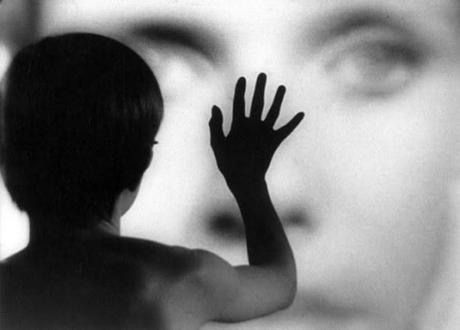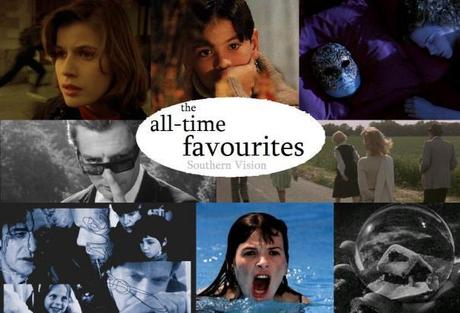
Welcome to the All-Time Favourites Series. This series examines 25 of the greatest films I’ve ever seen, looking at them in depth with analyses of what makes them great, and cutting down to the most basic level, looking at plot, cinematography, writing, direction, acting and other things, to see what makes these great films tick. This week’s film is Ingmar Bergman’s dark and experimental wonder Persona.
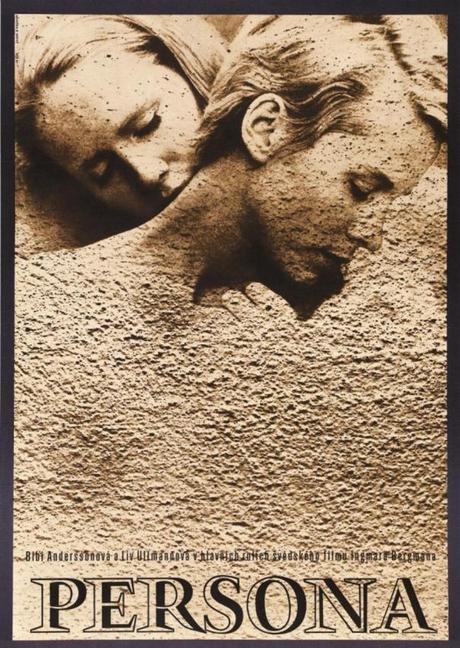
A projector hums and then roars to life. Images flicker on screen, dark and surreal. Eventually the camera settles on a scene of a young boy in what looks like a morgue. He reaches out toward a fuzzy female figure. Then the credits suddenly pop up as titles that appear briefly, separated by images of the characters. This is the opening “prologue” of Ingmar Bergman’s Persona. It almost seems like a mixture of Godard and Bunuel based on these six minutes alone, but as the film settles and the story begins to unfold, we realize it couldn’t be more Bergman. To call this his most experimental film is somewhat of an insult, as it implies that Bergman doesn’t know what he’s doing and hasn’t planned properly. That’s a lie. Every detail is exact, the editing is nothing short of wondrous, and the script and direction shows itself to be nothing short of utter perfection, exacting and truthful.
However, after two decades of making films with easy-to-follow plots, storylines and not overwhelming imagery, Persona can be seen as an experiment for the master. With this film, he charts new territory, adding various images and styles to make the film darker and more thought-provoking than his other features. One of the most notable of these is his use of breaking the fourth wall. At first it is subtle, in the way his characters act, but then it becomes more technical. At one vital point during the film, the projector suddenly stops and burns up, before slowly readjusting itself and resuming the movie. Near the end, we see in a two-second shot, Bergman himself with his cinematographer Sven Nykvist, shooting the movie. These are among many touches Bergman uses to make this film feel different and somewhat uncomfortable for the viewer, distancing them from his other work and forcing them to think about the meaning of more subtle, less obvious images and symbolism.
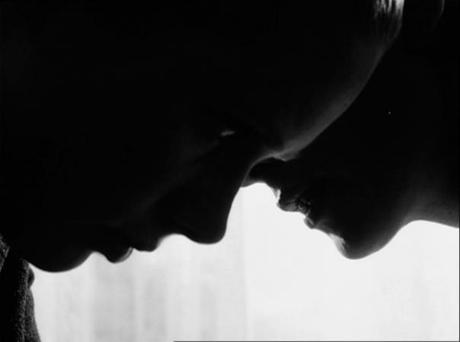
The story is about an actress, Elizabet Vogler (Liv Ullmann), who in the middle of a performance, suddenly stops talking and looks around, uncomfortably. She is suddenly gripped by fear she can’t explain, and from then on she refuses to speak. A young nurse named Alma (Bibi Andersson), who looks eerily similar to Elizabet, is emotionally her polar opposite. She is talkative, light, cheery and optimistic. But as the two begin to spend more time in each other’s company at a summer house, they begin to realize they have more in common than they think. The plot never quite goes where you expect it to, chiefly because in the second half, Bergman decides to abandon it and let his artistic and visual style lead the film. This is a risky choice, but it pays off. In letting his excellent sense of creative control overwhelm the film, the viewer has a chance to witness the seemingly boundless limits of Bergman’s stylistic ability, which are stunning to put it lightly. The second half is like a dream. The dream sequences themselves have an eerie quality, and feel nightmarish. The sequences of reality are equally as frightening. The film culminates in a long monolog delivered by Alma in which she reveals all of Elizabet’s secrets, which she has tried to hard for so long to escape. The camera focuses on the Alma during this, and then when she is finished, we see the entire scene again, this time with the camera on the distressed and silent Elizabet. Though it is obvious Alma is the one who is speaking, we become dubious. Alma is telling Elizabet’s story, a story she has no possible way of knowing, and Elizabet is confused and desperate to escape.
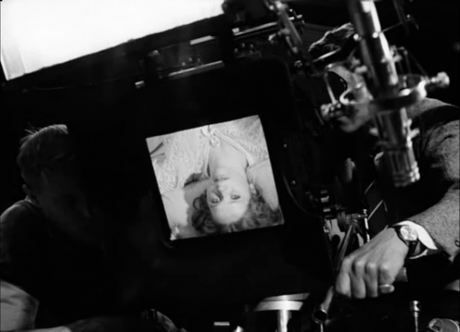
Persona is a difficult film to watch the first time round. When I first saw it, I was confused and not completely satisfied. All I knew was that I liked it a lot. I quickly bought the DVD and watched it again. The second time it hit me. The film suddenly looked a lot more interesting than the first time. I was thinking about it for days. It is a film that requires a lot of thought. You cannot just watch it casually. Each shot is fascinating, gripping. The symbolism is rich and heavy. The images are equally thoughtful and provocative. Sven Nykvist, Bergman’s cinematographer, is the greatest cinematographer who has ever lived, and the way he frames these images so carefully is marvelous. Each shot is a dark delight. I cannot imagine the film being shot in colour, and the stark and unnerving black and white photography is simply perfect. The editing also complements the photography by being careful, sudden, harsh and shocking. The famous image of the faces of the protagonists’ merged together is one of the most horrific images I’ve ever seen in a film.
Every time I watch Persona, which is generally once a month, I discover something new. There are so many subtle cuts and images that rewatching the film feels like finding a treasure you buried long ago; you know what’s in it, but you’re still discovering things you forgot were there. The 60s was the most creative period for Bergman, and following the success of his faith trilogy, Persona continued the feeling of unease that was shared plentifully through its predecessors. The follow-up to this film, The Hour of the Wolf, which also starred Liv Ullmann, is like a sequel to this movie in many ways, such as its fractured plotline, unstable characters, excellent editing and the dark and uneasy shadow cast over it. Themes like this would become prevalent throughout the latter part of his career, and although they began back in 1961 with Through a Glass, Darkly, it was in Persona that they matured to their full and became “Bergman techniques.” The images in a film like this you don’t forget easily. They linger in the mind. The 1960s was a very experimental decade, but of its genre, Persona is the best, most relevant and most important film.
